- Home
- Alison Weir
Queen Isabella: Treachery, Adultery, and Murder in Medieval England Page 4
Queen Isabella: Treachery, Adultery, and Murder in Medieval England Read online
Page 4
Ranulph Higden describes Edward as being “passionately devoted to one particular individual, whom he loved above all, showered with gifts and always put first; he could not bear separation from him, and honoured him more than anyone else. As a result, the beloved was loathed and the lover entangled himself in hatred and disaster.”
In the fourteenth century, homosexuality was viewed as one of the vilest of crimes. Because it was regarded as a sin against nature and against the divinely appointed order of the universe, those found guilty of it faced, at the very least, excommunication by the Church, because it was seen as a form of heresy; some offenders were castrated or burned at the stake. It is hardly surprising, therefore, that the relationship between Edward and Piers was looked on with almost universal disapproval, even outrage, especially when the two men seemed to be flaunting their liaison.
It is true that both Edward and Gaveston married and fathered children, but that was what society expected of them, and it proves only that each man was capable of normal sexual relations. It is also true that Edward acknowledged a bastard son, Adam,61 who was probably born before his accession. The Prince is further said to have been “given to the company of harlots”62 in youth; when he was only fourteen, he paid 2s. (10p.) to a certain Maude Makejoy (whose name implies that she was a prostitute) for dancing before him. This all suggests either that he was uncertain of his sexuality in these early years or that he was truly bisexual.
Before long, however, it was Edward’s passion for Piers that was fueling the relationship. It seems he had quickly come to terms with his sexual orientation, for thereafter, in his naive way, he appeared to see no wrong in it. And that was the root of the problem.
For a time, Edward I entertained no doubts about his son’s friendship with Gaveston. Initially, he regarded it with approval and showed Gaveston great favor,63 praising the example he set the Prince in his virtuous conduct and courtly manners. In 1303, the two young men earned further royal approbation when they served together in Scotland. However, in 1305, while on another northern campaign, Piers blotted his copybook by deserting the army, with several other young men, to take part in a tournament in France. Edward I was furious.64
By now, it was becoming clear to the old King that Gaveston was a bad influence on his son, especially after the pair of them, abetted by a gang of other youths, invaded the estates of Walter Langton, Bishop of Chester, the King’s Treasurer, pulled down fences, and scattered the deer and other game. When the Bishop complained to the King, the Prince “uttered coarse and harsh words to him” and was sent in disgrace to Windsor Castle with only one servant in attendance, there to await his father’s summons.65 It did not come, and for the next six months, the boy remained in disgrace. Worst of all, from his point of view, he was banned from seeing Gaveston.
A reconciliation was finally effected in October 1305 through the good offices of Queen Marguerite. At Whitsun 1306, Edward and more than 260 other young men, including Gaveston, Hugh le Despenser, and Roger Mortimer (who were all to play fateful roles in Isabella’s life story), were knighted in a great ceremony at Westminster, by which time Gaveston had his own household and had been granted land in ten counties. Soon afterward, the Prince and Gaveston joined Edward I in another campaign against the Scots. But early the next year, Edward of Caernarvon gave his father further offense when he asked him to give Piers, as a mark of royal favor, either the royal earldom of Cornwall or the counties of Ponthieu and Montreuil, which the Prince had inherited from his mother. Given the King’s entrenched prejudices against the alienation of royal lands and the Prince’s obvious and inappropriate infatuation with Piers, it is not surprising that Edward I erupted in rage. He grabbed his son by the hair and dragged him about the room, shouting, “You baseborn whoreson! Would you give away lands, you, who never gained any?”66
The King’s fury masked a growing anxiety as to the precise nature of the relationship between Gaveston and his son. On 26 February 1307, “for certain reasons,” which are unspecified in the written order,67 he banished Gaveston to Gascony.68 The Chronicle of Lanercost states that Piers was really exiled “on account of the undue intimacy which the younger Lord Edward had adopted towards him, publicly calling him his brother,” while the Annales Paulini claim that the King was concerned about “the inordinate affection” that his son had for “a certain Gascon knight.” Edward I further forbade the Prince to have his friend “near him or with him” and ordered him never to bestow on him any lands and titles. Even so, by providing so generously for Gaveston’s maintenance, he made it clear that he thought Piers more sinned against than sinning.
The Prince and Gaveston were made to swear on the Blessed Sacrament and Edward I’s “holiest relics” not to contravene the King’s edict,69 which in itself suggests how strong their friendship was perceived to be, then in May, a miserable Edward bade farewell to Gaveston at Dover, after lavishing gifts on him.70 In the event, Piers went to Ponthieu rather than Gascony, and apparently with the King’s blessing. The Prince announced his intention of visiting him there, but King Edward forbade it.71
At this time, Edward I was in the north, planning a new assault on Scotland. But he was a sick, bedridden man, possibly suffering from cancer of the rectum, and at Burgh-on-Sands, on 7 July 1307, he breathed his last, expiring as his servants were raising him to eat some food.72 The Prince of Wales, now twenty-three, was King of England.
One of Edward I’s legacies to his son was a kingdom nearly bankrupted by a war that looked to be unwinnable, with a great portion of his future revenues mortgaged to Italian bankers. Edward II also inherited a nobility that had chafed and grown resentful under the iron fist of the Crown and was determined to regain its lost influence and privileges. Nevertheless, the new King’s accession was the occasion of “the greatest rejoicing,”73 for he was young and debonair, had the common touch, and was seemingly deserving of the immense goodwill of his people. “God has bestowed every gift on him, and made him equal to, or indeed more excellent, than other kings,” claimed Robert of Reading. “What high hopes he had raised as Prince of Wales!” commented Edward’s biographer ominously,74 while the Pope compared him to the biblical King Rehaboam, the son of Solomon, who lacked wisdom and relied on the advice of young, violent persons, through which his kingdom was grievously divided. In Scotland, Robert Bruce drily stated that he feared dead Edward’s bones more than his living heir.
The people were soon to be bitterly disillusioned: “all hopes vanished when the Prince became King.”75 Edward II’s first royal act was to recall Piers Gaveston.76 “He had home his love,” observed one chronicler. On 6 August, even before the favorite returned, his sovereign bestowed on him the earldom of Cornwall,77 which until recently had been held only by members of the royal House and brought with it the vast income of £4,000 a year, almost as much as the Queen’s dower. No commoner had ever been raised so high at a stroke, yet this creation was made “with the approval of some of the magnates,” notably Henry de Lacy, Earl of Lincoln, one of the most loyal, honest, and able servants of Edward I78 and a personal friend of that King. During his long career, Lincoln, now fifty-seven, had served the Crown faithfully as both a general and a diplomat; it was he who had helped to negotiate the new King’s marriage to Isabella of France. Lincoln appears to have thought well of Gaveston at this period, and when some raised doubts as to whether the King could legally alienate the earldom of Cornwall, “which he held with the Crown, Earl Henry said that he could” because there were precedents. But the majority of the barons did not agree, “as much because Piers was an alien of Gascon birth, as through envy.”79
Gaveston arrived in England around 13 August and was soon entrenched at court. The King “did him great reverence and worshipped him,” almost as if he were a god. There is no doubt that, after the monarch, Gaveston was now the most important man in the realm. Unsurprisingly, “the magnates of the realm hated him because he alone found favour in the King’s eyes, and lorded it over them like a
second king, to whom all were subject and none equal. Almost all the land hated him too, and foretold ill of him, whence his name was reviled far and wide. Nor could the King’s affection be alienated from Piers, for the more he was told, in attempts to damp his ardour, the greater grew his love and tenderness towards Piers.”80
The King wasted no time in replacing some of his father’s ministers and judges. Pricked on by Gaveston,81 he began by dismissing his old adversary Bishop Langton and replacing him as Treasurer with Walter Reynolds, whom he made Bishop of Worcester. Reynolds, the son of a Windsor baker and former Keeper of the Prince’s Wardrobe, was chosen apparently because he was Gaveston’s friend and was skilled at mounting the theatrical entertainments that Edward so enjoyed.82 Langton was imprisoned in the Tower of London and accused of the misappropriation of public funds; his public accounts were made the subject of an inquiry, and his treasure was given to Gaveston.83 The King also urged the Pope to restore the archbishopric of Canterbury to his father’s staunchest adversary, Robert Winchelsey, who was then in exile.84
Edward I’s dying instructions to his son were to have the flesh boiled from his bones so that they could be carried at the head of a conquering army into Scotland.85 Edward II ignored this request, just as he had quickly abandoned the war in Scotland, and on 27 October, his father’s body was buried in Westminster Abbey, where the inscription “Malleus Scotorum” (“The Hammer of the Scots”) was later inscribed on his tomb. Two days later, in order to “strengthen Piers and surround him with friends,” the King had Gaveston betrothed to his niece, Margaret de Clare, daughter of Joan of Acre by the late Earl of Gloucester. The marriage took place on 1 November at Berkhamsted Castle, with the King as guest of honor.86 This union not only brought Gaveston into the royal circle but did indeed “strengthen his position not a little, for it much increased the goodwill of his friends and restrained the hatred of the baronage.”87 This was partly because the bride’s brother, Gilbert de Clare, the sixteen-year-old Earl of Gloucester, raised no objection to the marriage. He knew Gaveston well, having been brought up with him in the Prince’s household.
Preparations for the King’s marriage and coronation were already in hand, but Edward spent most of November in Gaveston’s company at his favorite manor of Langley. On 2 December, with the aim of enhancing his “honour and glory,” Gaveston held a great tournament at his castle of Wallingford, during which he unhorsed and “most vilely trod underfoot” the Earls of Arundel, Surrey, and Hereford, exulting triumphantly in his victory. The Earls never forgave him this insult. His pride, it was said, damaged him more than his prowess.88
According to the Vita Edwardi Secundi, “hatred for Gaveston mounted day by day, for he was very proud and haughty in bearing. All those whom the custom of the realm made equal to him he regarded as lowly and abject; nor could anyone, he thought, equal him in valour.” The lords “looked down on him because, as a foreigner and formerly a mere man-at-arms, raised to such distinction and eminence, he was forgetful of his former rank. Thus he was an object of mockery to almost every one in the kingdom. But the King’s unswerving affection for him prompted the issue of an edict from the court that no one should call him Piers Gaveston, but should style him Earl of Cornwall.”89
Edward was due to depart for France after Christmas and had to leave his kingdom in the custody of a royal relative or some trustworthy noble. On 20 December, he appointed Piers Keeper of the Realm,90 which provoked disgusted comments from the chroniclers91 but surprisingly no overt criticism from the magnates, most of whom were better qualified than Gaveston for this high honor.
Edward and Piers spent Christmas together. Neither can have felt very happy at the prospect of the King’s marriage. Gaveston had every reason to resent Isabella and what she stood for. He was a Gascon, and his family had been driven from the duchy during the French occupation. He therefore had good cause to hate and distrust Philip IV, and he would certainly have regarded Philip’s daughter as an interloper and a threat to his ascendancy over the King. The evidence suggests that he did his best to stir up trouble between Edward and Philip in a last-ditch attempt to make Edward abandon his treaty with the French, urging that Philip would not rest until he had finally conquered Gascony. But there were others on Edward’s council who greatly feared the consequences if their master reneged on his obligations to Philip, and for once, they prevailed over the favorite.
We have no means of knowing how much Isabella learned before her marriage, or understood, of her future husband’s relationship with Piers Gaveston. It must have been common gossip at the French court, but the Princess may have been shielded from any adverse talk. It is inconceivable, however, that Philip IV was not aware of the furor and scandal that his future son-in-law’s elevation of Gaveston was causing. Some historians have accused him of hypocrisy in giving his daughter to a reputed sodomite when he was charging the Templars with that very crime, but no doubt Philip would have taken a pragmatic view of such matters. This alliance would extend France’s influence, so personal considerations must be set aside.
Isabella’s preparations for her marriage were now complete. In her trousseau, she had numerous gowns, including some of baudekyn,92 velvet, and shot taffeta. Six were of green cloth from Douai, six were beautifully marbled,93 and six were of rose scarlet.94 These gowns would have had tight-fitting bodices and sleeves, and circular skirts with trains.
Only unmarried girls, and queens on ceremonial occasions, wore their hair loose. It was fashionable for hair to be curled, and some of the representations of Isabella show her with curly hair. However, as a married woman, she would be obliged to wear a triangular-shaped linen or silk headdress comprising a chin-barbe, veil, and wimple, which was padded out at the sides with ramshorn and exposed the hair at the temples. Isabella had no fewer than seventy-two headdresses and coifs in her trousseau.
Ladies of rank wore heavy mantles, or cloaks, over their gowns, and furs in the cold weather, and Isabella brought many costly furs to England. She also had two gold crowns ornamented with gems, gold and silver drinking vessels, golden spoons, fifty silver porringers, twelve large silver gilt dishes, twelve small silver gilt dishes, and fifty silver plates. She was also provided with 419 yards of linen for her bath, body linen for chemises and hose (drawers were unknown before the sixteenth century), and tapestries blazoned with gold-embroidered lozenges framing the arms and heraldic emblems of England, France, and Navarre for her chamber.95
Early in the morning of Monday, 22 January 1308, Edward II sailed from Dover with a great retinue, arriving in Boulogne on the evening of the twenty-fourth, three days later than planned;96 the delay was probably due to the vagaries of winter travel. Philip IV was waiting to greet him and present to him his bride.
Isabella was an enchanting child who would grow into “a most elegant lady and a very beautiful woman.”97 It was conventional for chroniclers routinely to describe queens and highborn ladies as being fair in visage, yet their praise for Isabella’s looks is so fulsome and unanimous that she must indeed have been beautiful. Edward II himself gave her the nickname “Isabeau the Fair”;98 Walter of Guisborough, echoing Jean le Bel, calls her “one of the fairest ladies in the world”; Froissart, “the beautiful Isabella.” She was “the fairest of the fair,” “more beautiful than the rose,” and “the beauty of beauties in the kingdom, if not all of Europe.”99
Isabella, like her brother Charles, who was also nicknamed “the Fair,” probably took after her father in looks. There is a French manuscript illustration of circa 1315 showing Philip IV with his sons and daughter,100 but these are in no way portraits. Lacking any precise description, even a note of the color of her hair, we must look elsewhere for clues as to what Isabella really looked like. Contemporary ideals of beauty favored blonde, plump women, and we may therefore suppose that Isabella conformed to this type, but there is also some evidence that she had these attributes.
There are several extant representations of Isabella, some merely images of
a queen, others possible attempts at an accurate portrayal. Most manuscript illustrations depicting Isabella date from the fifteenth century and owe much to the artist’s imagination. There are a few pictures of her in more contemporary manuscripts, which will be discussed later, but which are, again, in no sense portraits. Isabella also appears on her seal, in the conventional image of a queen, whose figure stands between two shields.101
A corbel head of a woman in a crown and wimple in Beverley Minster, Yorkshire, is said to portray Isabella and bears a striking resemblance to the authenticated stone head of her that appears on the Oxenbridge tomb in Winchelsea Church, Sussex, which dates from circa 1320. Both depict a young woman with a plump face, arched brows, and curled hair and may be true likenesses.102 Isabella traveled widely in England, and the men who sculpted these heads could well have seen her and attempted to produce her features with some veracity. On the other hand, a corbel head and a roof boss, both said to be Isabella, in Bristol Cathedral, and a boss in the choir of Exeter Cathedral, also purporting to be her, are probably purely representational. Three stone heads in Fyfield Church, Berkshire, are said to date from circa 1308 and to represent Isabella, Edward II, and the ship’s master who had brought them from France, while a carved corbel head in the gatehouse of Caldicot Castle, Monmouthshire, is perhaps a crowned Isabella.
The heads at Beverley and Winchelsea also appear to bear a familial resemblance to the tomb effigies of Isabella’s father and two eldest brothers at Saint-Denis, which are contemporary and sufficiently individualistic as to suggest attempts at likenesses. By this period, there was a definite trend toward realism in funerary effigies, although most were idealized images. Another representation of Isabella showing her crowned with curly hair escaping from her wimple is in the Psalter of Queen Isabella, which was probably commissioned by her. She is shown wearing a long gown belted under the bust and a cloak with an embroidered hem; in her hand is a shield bearing the royal fleurs-de-lis of France.103

 Richard III and the Princes in the Tower
Richard III and the Princes in the Tower Britain's Royal Families: The Complete Genealogy
Britain's Royal Families: The Complete Genealogy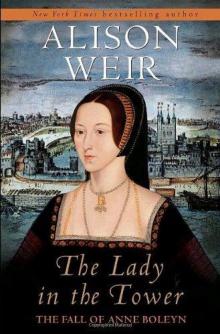 The Lady in the Tower: The Fall of Anne Boleyn
The Lady in the Tower: The Fall of Anne Boleyn Six Wives of Henry VIII
Six Wives of Henry VIII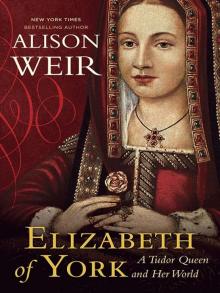 Elizabeth of York: A Tudor Queen and Her World
Elizabeth of York: A Tudor Queen and Her World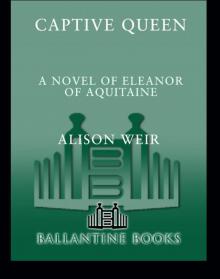 Captive Queen
Captive Queen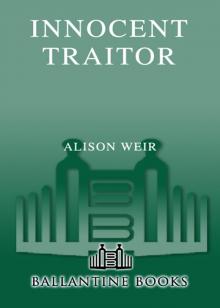 Innocent Traitor
Innocent Traitor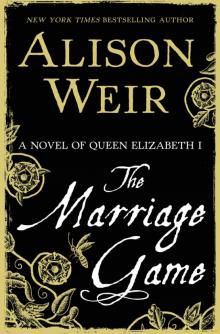 The Marriage Game
The Marriage Game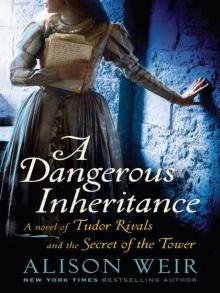 A Dangerous Inheritance
A Dangerous Inheritance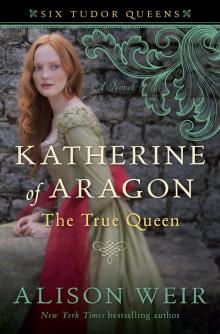 Katherine of Aragón: The True Queen
Katherine of Aragón: The True Queen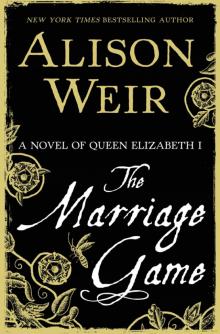 The Marriage Game: A Novel of Queen Elizabeth I
The Marriage Game: A Novel of Queen Elizabeth I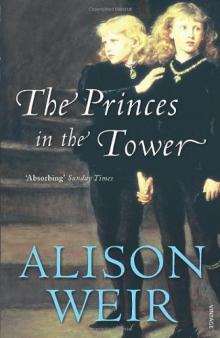 Princes in the Tower
Princes in the Tower Anne Boleyn: A King's Obsession
Anne Boleyn: A King's Obsession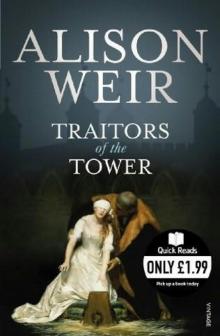 Traitors of the Tower
Traitors of the Tower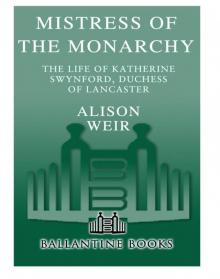 Mistress of the Monarchy: The Life of Katherine Swynford, Duchess of Lancaster
Mistress of the Monarchy: The Life of Katherine Swynford, Duchess of Lancaster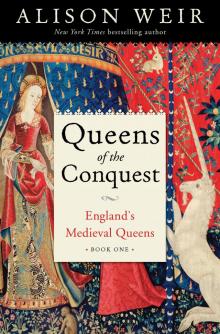 Queens of the Conquest: England’s Medieval Queens
Queens of the Conquest: England’s Medieval Queens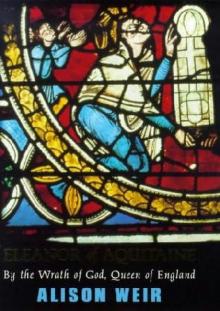 Eleanor of Aquitaine: A Life
Eleanor of Aquitaine: A Life Mary, Queen of Scots, and the Murder of Lord Darnley
Mary, Queen of Scots, and the Murder of Lord Darnley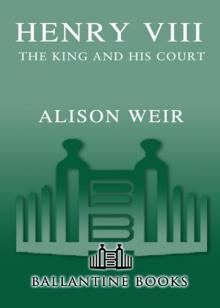 Henry VIII: The King and His Court
Henry VIII: The King and His Court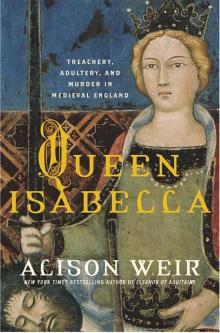 Queen Isabella: Treachery, Adultery, and Murder in Medieval England
Queen Isabella: Treachery, Adultery, and Murder in Medieval England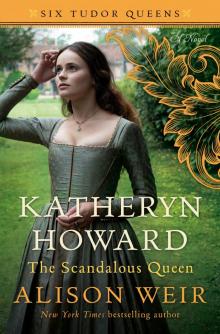 Katheryn Howard, the Scandalous Queen
Katheryn Howard, the Scandalous Queen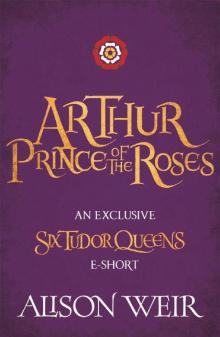 Arthur- Prince of the Roses
Arthur- Prince of the Roses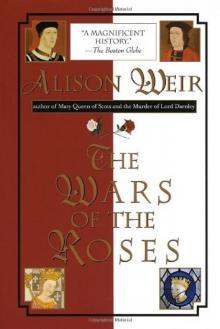 The Wars of the Roses
The Wars of the Roses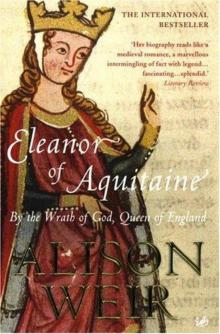 Eleanor of Aquitaine: By the Wrath of God, Queen of England
Eleanor of Aquitaine: By the Wrath of God, Queen of England Mary Boleyn: The Great and Infamous Whore
Mary Boleyn: The Great and Infamous Whore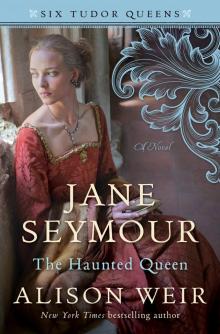 Jane Seymour: The Haunted Queen
Jane Seymour: The Haunted Queen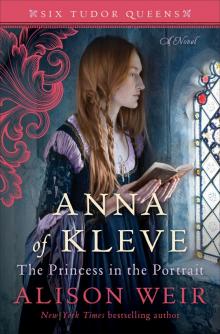 Anna of Kleve, the Princess in the Portrait
Anna of Kleve, the Princess in the Portrait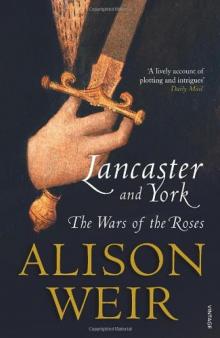 Lancaster and York: The Wars of the Roses
Lancaster and York: The Wars of the Roses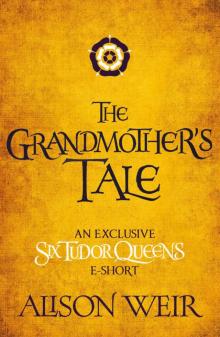 The Grandmother's Tale
The Grandmother's Tale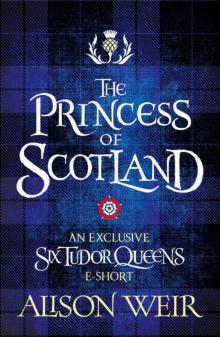 The Princess of Scotland (Six Tudor Queens #5.5)
The Princess of Scotland (Six Tudor Queens #5.5)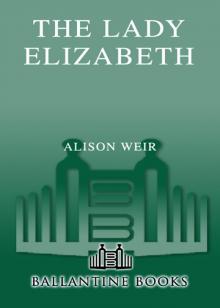 The Lady Elizabeth
The Lady Elizabeth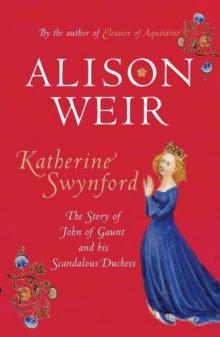 Katherine Swynford: The Story of John of Gaunt and His Scandalous Duchess
Katherine Swynford: The Story of John of Gaunt and His Scandalous Duchess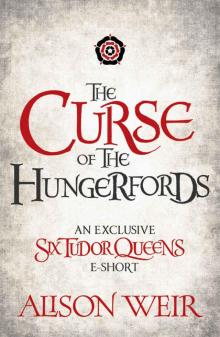 The Curse of the Hungerfords
The Curse of the Hungerfords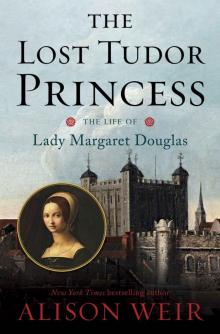 The Lost Tudor Princess: The Life of Lady Margaret Douglas
The Lost Tudor Princess: The Life of Lady Margaret Douglas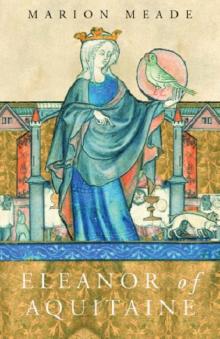 Eleanor of Aquitaine
Eleanor of Aquitaine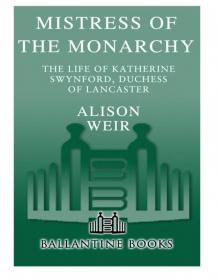 Mistress of the Monarchy
Mistress of the Monarchy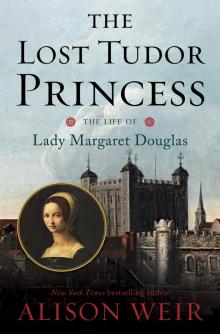 The Lost Tudor Princess
The Lost Tudor Princess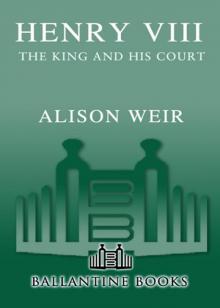 Henry VIII
Henry VIII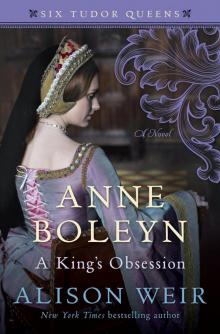 Anne Boleyn, a King's Obsession
Anne Boleyn, a King's Obsession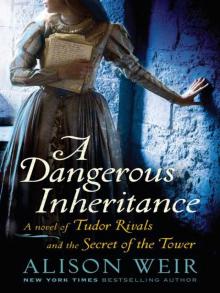 A Dangerous Inheritance: A Novel of Tudor Rivals and the Secret of the Tower
A Dangerous Inheritance: A Novel of Tudor Rivals and the Secret of the Tower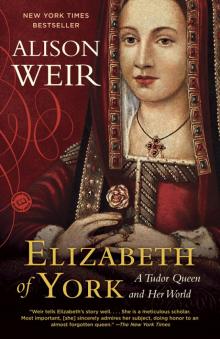 Elizabeth of York
Elizabeth of York Katherine of Aragon, the True Queen
Katherine of Aragon, the True Queen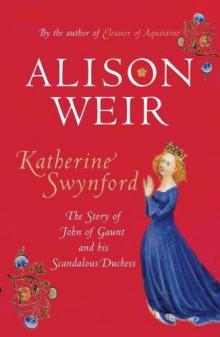 Katherine Swynford
Katherine Swynford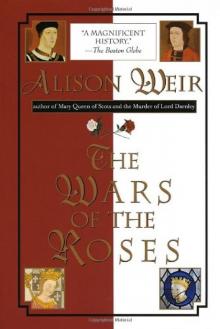 Wars of the Roses
Wars of the Roses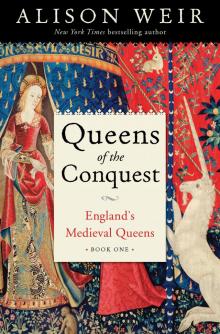 Queens of the Conquest
Queens of the Conquest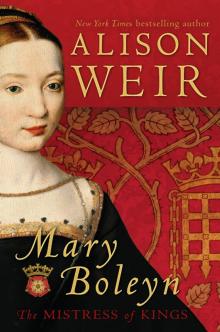 Mary Boleyn
Mary Boleyn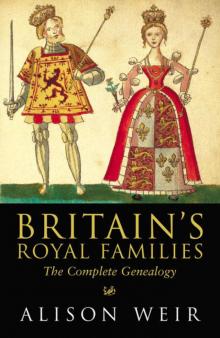 Britain's Royal Families
Britain's Royal Families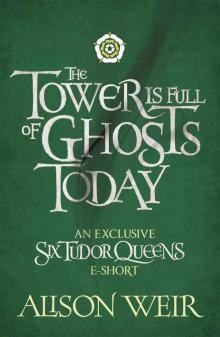 The Tower Is Full of Ghosts Today
The Tower Is Full of Ghosts Today Life of Elizabeth I
Life of Elizabeth I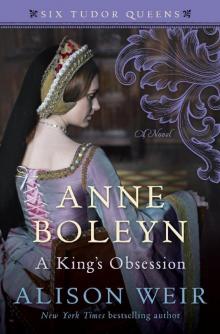 Anne Boleyn A King's Obssession
Anne Boleyn A King's Obssession Lancaster and York
Lancaster and York Jane Seymour, the Haunted Queen
Jane Seymour, the Haunted Queen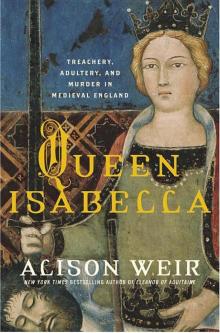 Queen Isabella
Queen Isabella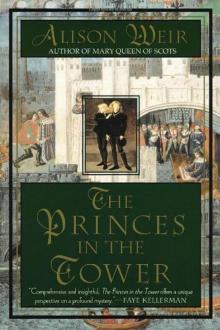 The princes in the tower
The princes in the tower